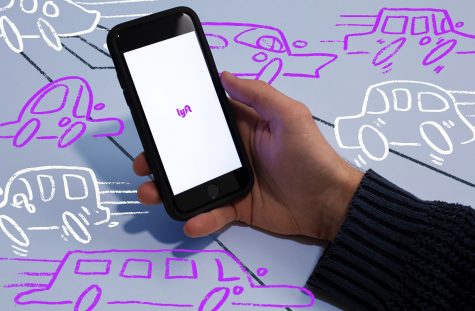The ‘deadheading’ season: plight of the ride-share driver
February 21, 2020

When Kyra Hendricks, a senior creative writing major, moved out of her parents’ home at 18, she understood she would have to find a job in order to pay rent and maintain her independence.
So, in December 2018, Hendricks began driving for the ride-share company Uber, which was her sole source of income for six months until she had to get an additional job to pay bills.
“It is really difficult during those slow seasons because if you’re driving to pay your rent or your bills or books or whatever, it’s really up in the air as to how much you could make,” Hendricks said. “You could be driving for hours and get next to no rides.”
In the ride-share industry, driving without a passenger for miles is a practice known as “deadheading,” which happens at various points throughout the year but is more pronounced during the early months of the year due to many people making New Year’s resolutions to save money, among other factors.
In fact, Uber recommends drivers take a break during this time because of how slow business becomes, according to the company’s blog.
“It’s a fact that January is probably the slowest month of the year when it comes to ride-share drivers due to the seasonal effect,” said Sergio Avedian, senior contributor for the blog and podcast The Rideshare Guy. “February and March continues [the slow season] because it’s winter and people don’t go out as much.”
Avedian said people tend to go out less because they have a lot of bills due after the holidays and taking ride-shares becomes “a luxury.”
Additionally, a boom in drivers is causing oversaturation of the marketplace with “eight Uber cars and eight Lyft cars” on every street corner, Avedian said.
This has caused drivers’ utilization rates to decrease. Utilization rate is the percentage of time a driver has someone in their car relative to their overall workday, he said. The higher the utilization rate, the more earnings the driver is making.
“In the old days, driver utilization rates were close to 100%. You could basically nonstop drive if you wished,” Avedian said. “Nowadays, in a very busy city—I’m in Los Angeles, and it’s a very busy city when it comes to ride-share—my personal utilization rate is down to 50%.”
Hendricks, who drove 40 to 45 hours a week in Chicago, felt the difference in money on those slower days when she was often deadheading.
“During the slow times, I could be making anywhere from $60 to $75 a day,” she said. “Whereas, when it’s a little more populated in the city, I could make anywhere from $100 to $200 a day.”
Despite the fact that she no longer drives, Hendricks does not discourage people from working for a ride-share company because of the flexibility it offers, though she warns that rent can be difficult to pay during the slow season. She said it is “a great idea” for college students with cars because they can make their own hours.
According to a study by the JPMorgan Chase Institute released in September 2018, ride-share drivers made 53% less in 2017 than they did in 2013.
In Los Angeles, Avedian said driver rates went from $3.25 per mile in 2012 to 60 cents today.







